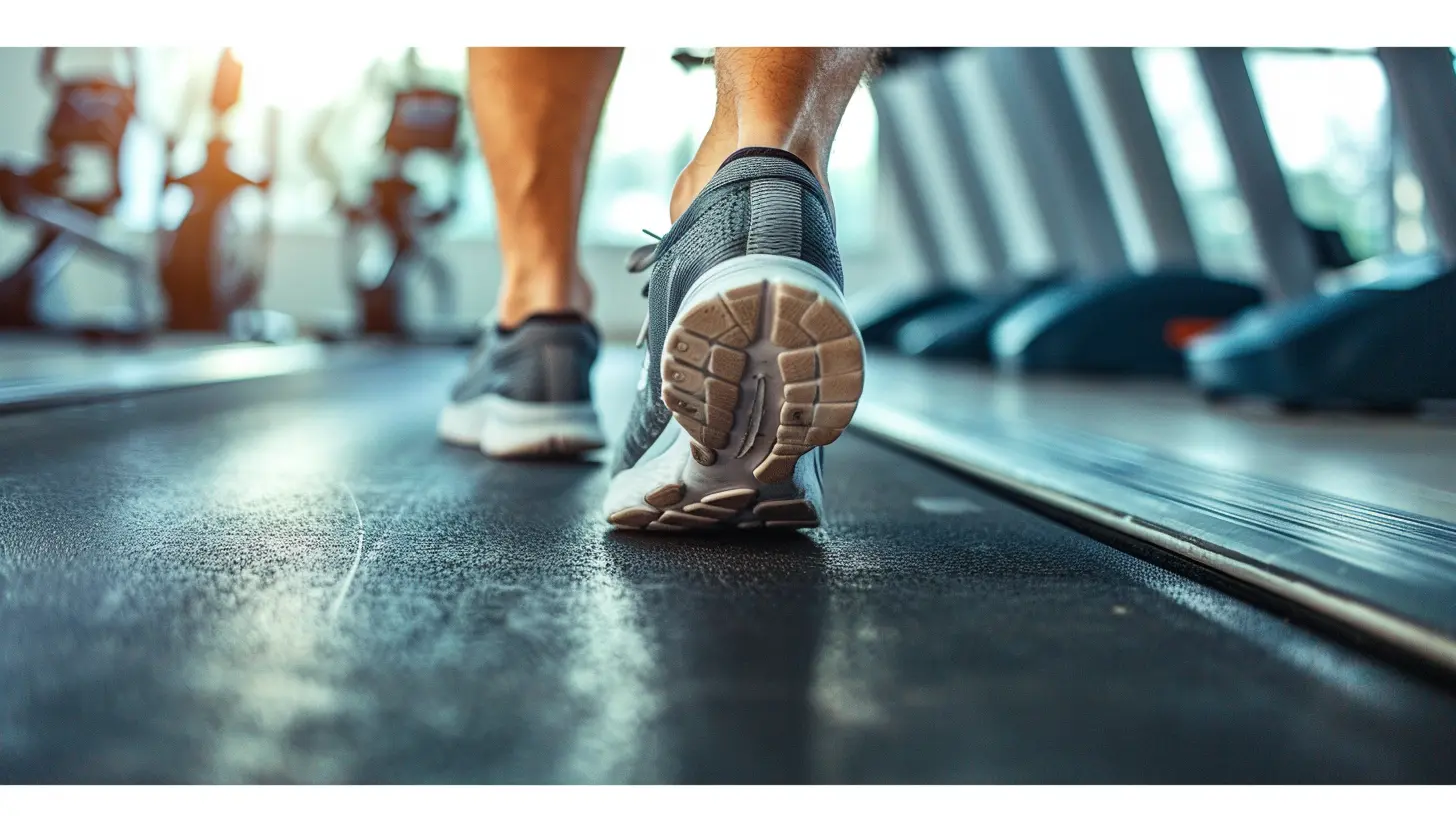The Science Behind High-Intensity Interval Training (HIIT)
21 June 2025
If you've ever felt bored running on a treadmill for an hour or slogging through the same gym routine, you're not alone. Ever wonder if there's a faster, more exciting way to torch calories, build strength, and boost your heart health all at once? That’s where High-Intensity Interval Training, or HIIT, bursts onto the scene like a bat out of fitness heaven.
Welcome to a workout style that’s shaking up the fitness world and flipping traditional training on its head. But what exactly is HIIT, and why does it work so well? What makes it such a game-changer in both professional sports and everyday gym culture?
Let’s break down the science behind HIIT in a way that makes sense — no lab coat required.
What Is High-Intensity Interval Training (HIIT)?
Imagine sprinting like you're late for the bus, then walking like you're browsing in a bookstore. Repeat that a few times. That’s HIIT in a nutshell — short bursts of very intense activity followed by slower recovery periods.Typically, a HIIT session lasts anywhere from 10 to 30 minutes. But don’t let the short times fool you — these workouts pack more punch than an hour of jogging on the treadmill.
Why? Because while you're catching your breath during those resting periods, your body is still in overdrive, trying to recover and regulate itself. That means you're still burning calories — even after the workout is done. It's like your body's own version of 'afterburn.'
The Science: How HIIT Works Inside Your Body
Alright, let’s geek out (just a little). When you throw your body into high-intensity mode, certain chemical and biological changes get triggered that make HIIT so effective.1. Boosts VO₂ Max
VO₂ max is a fancy way of saying how good your body is at using oxygen. The higher your VO₂ max, the better your endurance. HIIT increases this maximum level by pushing your heart and lungs to their limit, and then giving them just enough time to recover before doing it all over again.This up-and-down pattern trains your cardiovascular system to get stronger and more efficient, similar to how lifting weights trains your muscles to get stronger over time.
2. Elevates EPOC (Excess Post-Exercise Oxygen Consumption)
EPOC is the secret sauce behind HIIT’s fat-burning magic. After a session, your body uses a lot of oxygen to get back to its pre-exercise state — a process that burns even more calories.Think of it like your body running behind the scenes, fixing everything you broke during your workout. All that repair work? It costs energy — even when you're chilling on the couch post-HIIT.
3. Improves Insulin Sensitivity
Here’s another perk: HIIT helps your muscles use glucose more efficiently. That means lower blood sugar levels and a reduced risk of type 2 diabetes. Kind of like fine-tuning a car’s fuel system so it runs smoother and cleaner.
Mental Benefits: It’s Not Just Physical
We often talk about fitness like it’s all about getting shredded or dropping pounds. But HIIT also works wonders for your mind.1. Mood Enhancer
Those post-workout endorphins? HIIT is a pro at triggering them. It's been shown to battle symptoms of depression and anxiety more effectively than low-intensity workouts. It’s like a mental reset button in the shape of a sweaty, 20-minute session.2. Sharper Focus
Ever felt mentally foggy before a workout and crystal-clear after? That’s not your imagination. HIIT sharpens cognitive function, improves memory, and enhances decision-making. Great news if you’re juggling a hectic workday.
HIIT vs. Steady-State Cardio: What's the Difference?
So how does HIIT compare to your traditional 45-minute jog? Here’s a quick rundown:| Factor | HIIT | Steady-State Cardio |
|-----------|----------|--------------------------|
| Time | 10–30 mins | 45–60 mins |
| Calories Burned (Post-Workout) | High (due to EPOC) | Low |
| Fat Burn | Greater, especially belly fat | Moderate |
| Muscle Retention | Better | Lower |
| Mental Engagement | High (constantly changing) | Low (can feel repetitive) |
The verdict? If you want maximum results in minimal time — and you’re not scared of a little sweat — HIIT might be your new best friend.
Popular HIIT Formats: More Than Just Sprinting
Good news: you don’t have to be a runner to fall in love with HIIT. There are tons of ways to incorporate it into your routine.1. Tabata
20 seconds of work, 10 seconds of rest, repeated 8 times. Sounds simple? It’s brutal—in a good way. Perfect for those short on time.2. AMRAP (As Many Rounds As Possible)
Set a timer and squeeze in as many reps or rounds of a circuit as you can. It’s competitive and super motivating.3. EMOM (Every Minute On the Minute)
Pick one or two exercises and do them at the start of every minute. Rest for the remainder of the minute. Rinse and repeat.4. Circuit Training
Rotate through different exercises (e.g., push-ups, squats, burpees) with minimal rest in between. Keeps things interesting and works your whole body.Is HIIT for Everyone?
Here’s the thing: HIIT is intense. That’s the whole point. But it’s not one-size-fits-all.If you’re new to working out, coming back from an injury, or have certain health conditions, consult your doc before jumping into a hardcore HIIT session.
Good news though — HIIT is super customizable. You can adjust the intensity, duration, and type of exercises to match your level. Over time, as you become stronger and more conditioned, you’ll be able to push harder safely.
Real Benefits Backed by Real Studies
Still skeptical? Let’s talk facts.- A study published in the British Journal of Sports Medicine found that HIIT led to nearly 28.5% more fat loss compared to moderate-intensity continuous training.
- According to the Journal of Physiology, just three HIIT sessions per week over two weeks can improve whole-body insulin sensitivity by 23%.
- Athletes aren’t the only ones benefiting. Even older adults saw improvements in cardiovascular fitness and metabolic health in just a few weeks.
These are not just gains in the gym — they’re life-changing health improvements.
Tips for Getting Started with HIIT
Not sure where to begin? No worries, you don’t have to go full beast mode on day one. Here are a few tips to dip your toes in HIIT the smart way:1. Start Slow
Begin with shorter intervals, like 20 seconds on, 40 seconds off with bodyweight moves—think jumping jacks, squats, or mountain climbers.2. Form First, Speed Later
Want to avoid injury? Respect your body’s limits and focus on nailing proper form before trying to out-rep your shadow.3. Mix It Up
Change your exercises every week to keep your body guessing and your mind engaged. Boredom is the enemy of consistency.4. Hydration Matters
HIIT makes you sweat—a lot. Drink water before, during, and after your workout to keep your energy up and your body happy.HIIT and Sports Performance
Athletes from nearly every sport — from soccer to boxing to CrossFit — swear by HIIT. Why? Because it builds total-body conditioning.- Speed up sprint times.
- Increase agility and power.
- Enhance muscular endurance.
Whether you're a weekend warrior or a professional athlete, HIIT can elevate your performance in ways that traditional training often can’t.
Common Mistakes to Avoid
Let’s be real — HIIT is popular, but it’s also easy to misuse. Here are some common traps to steer clear of:- Going too hard, too soon. You’re not racing anyone but yourself.
- Skipping warm-up and cool-down. Your muscles aren’t machines — they need prep and recovery.
- Overtraining. Yes, HIIT is awesome. But it’s intense. Doing it daily without rest can actually hurt your progress.
Balance is key. Even a powerhouse like HIIT needs to be used wisely.
Final Thoughts: Why You Should Give HIIT a Go
If you're chasing a fitness routine that’s fast, effective, and never boring, HIIT ticks all the boxes. It’s backed by science, favored by athletes, and flexible for just about everyone.The beauty of HIIT is that it meets you where you are. You can do it at home, in the gym, or even at the park. Whether you have 10 minutes or half an hour, HIIT makes those minutes count.
Not to mention, it feels good—not just physically, but mentally. It wakes you up, lights you up, and gives you a serious confidence boost. Ready to get sweaty?
Give it a shot — you might just find it’s the workout love story you’ve been waiting for.
all images in this post were generated using AI tools
Category:
Gym TrainingAuthor:

Frankie Bailey
Discussion
rate this article
1 comments
Zachary Beck
This article effectively highlights the benefits of HIIT, combining scientific insights with practical applications. It's a valuable resource for anyone looking to enhance their fitness regimen. Great read!
June 22, 2025 at 4:26 AM

Frankie Bailey
Thank you for your kind words! I'm glad you found the article helpful in exploring HIIT's benefits.


